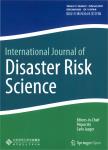Human Mobility in the Sendai Framework for Disaster Risk Reduction
Human Mobility in the Sendai Framework for Disaster Risk Reduction作者机构:Department of Operations and Emergencies International Organization for Migration(IOM)
出 版 物:《International Journal of Disaster Risk Science》 (国际灾害风险科学学报(英文版))
年 卷 期:2016年第7卷第1期
页 面:30-40页
核心收录:
学科分类:0709[理学-地质学] 08[工学] 0303[法学-社会学] 0832[工学-食品科学与工程(可授工学、农学学位)] 083002[工学-环境工程] 0830[工学-环境科学与工程(可授工学、理学、农学学位)] 1201[管理学-管理科学与工程(可授管理学、工学学位)] 0708[理学-地球物理学] 0705[理学-地理学] 0837[工学-安全科学与工程] 0706[理学-大气科学] 0813[工学-建筑学] 0704[理学-天文学] 0833[工学-城乡规划学]
主 题:灾难风险减小 排水量 人的活动性 移植 重定位 为灾难风险减小的仙台框架
摘 要:This article looks at how population movements are addressed by the Sendai Framework for Disaster Risk Reduction 2015–2030(SFDRR), and highlights some of the potential implications of the SFDRR on disaster risk reduction(DRR) and mobility management work. The article looks at the operational implications of the SFDRR text and covers issues of including migrants in DRR work;informing urban development about current and future mobility trends; managing relocations, evacuations, and displacement to prevent future risks and reduce existing ones; and preparing for and managing disaster-induced population movements to reduce the direct and indirect impacts of natural hazards. Overall, the references to human mobility within the SFDRR show an evolution in the way the issue is considered within global policy dialogues. Both the potential of population movements to produce risk and their role in strengthening the resilience of people and communities are now clearly recognized. This is an evolution of previously prevailing views of mobility as the consequence of disasters or as a driver of risk. While some implications of the DRR-mobility nexus might still be missing from DRR policy, population movements are now recognized as a key global risk dynamic.



